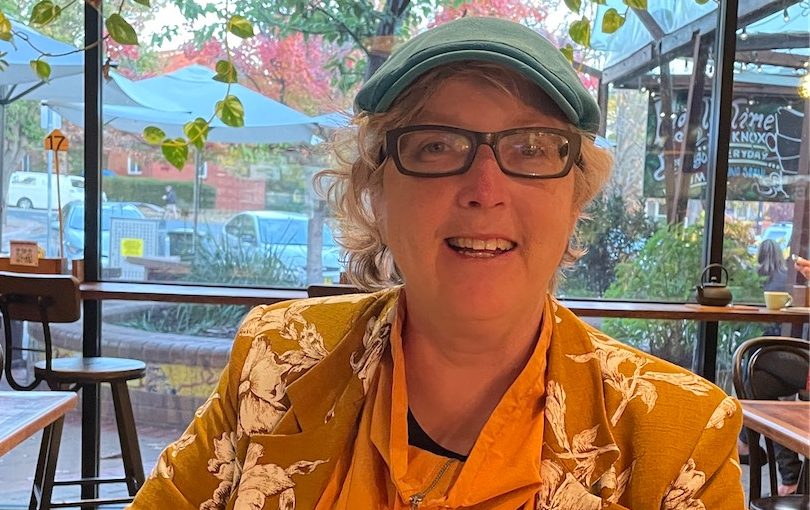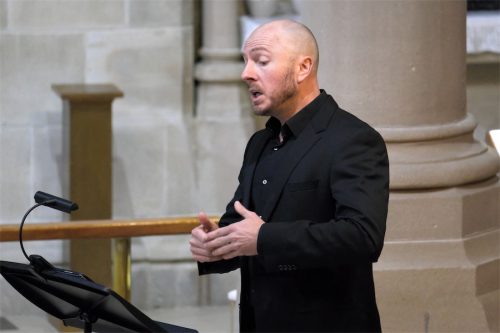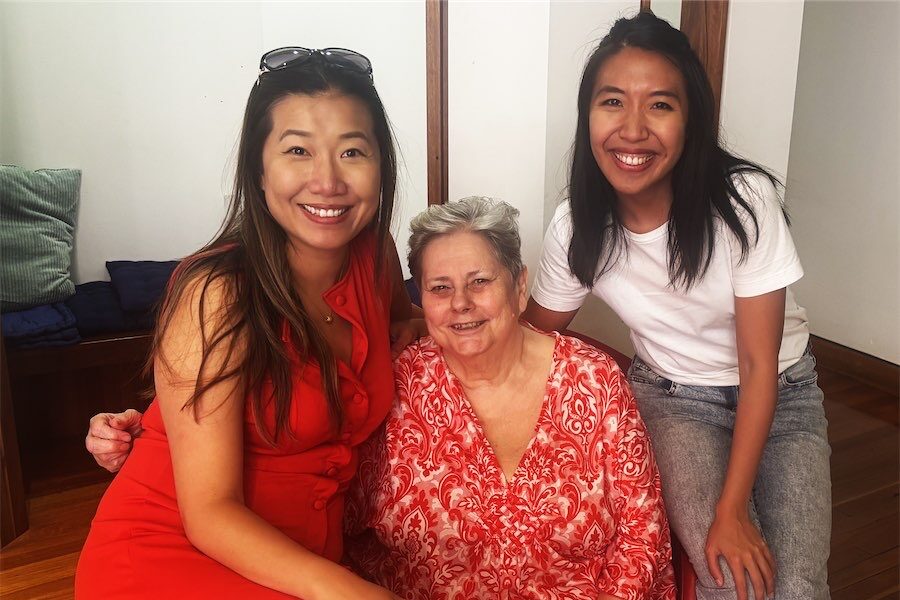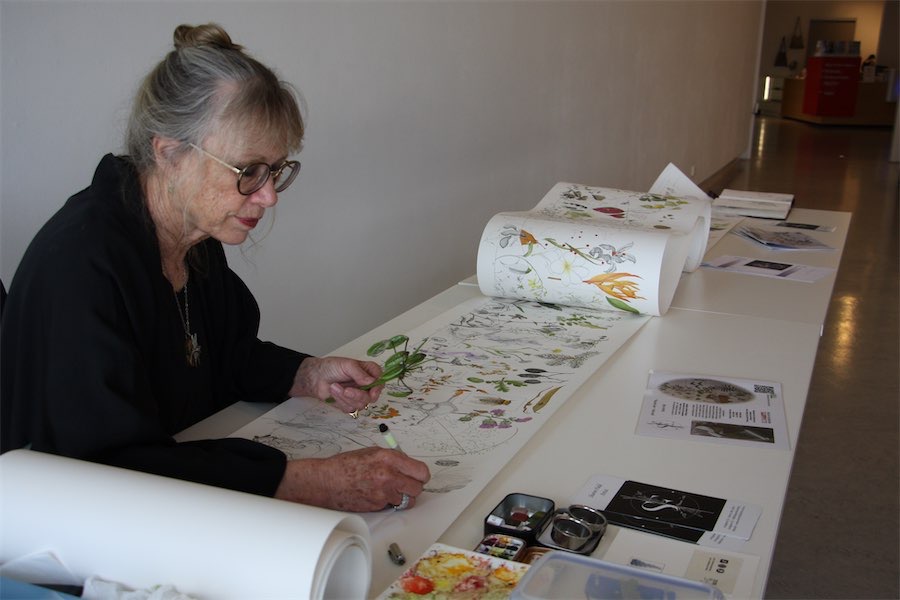
POET, artist, philosopher and academic, Sarah Rice is one of the true chameleons of the Canberra arts scene – and she sings, too.
A former soprano with Canberra’s long-running Oriana Chorale, she’s returning to the choir armed with an ArtsACT grant for an ambitious project that puts all her talents to work.
The multi-arts project inspired by Rice’s poetry about to take the stage at Llewellyn Hall under the title “Text/ure,” was made that all at easier by the fact that Oriana’s newish conductor, Dan Walker, was keen to attract new audiences and new choristers, so was on board from the start.
World premieres by Canberra-connected composers Phil Batterham, David Cassat, Judith Clingan, Sally Greenaway, Quin Thomson and Dan Walker, as well as music by Eric Whitacre, Ralph Vaughan Williams, Joe Twist and Jaako Mäntyjärvi will be performed without accompaniment and Rice will be returning to sing with her old choir.
The concluding poems along with the entire creative process will be documented in a book to be published by Recent Work Press.
Luckily, from Rice’s poetic perspective, Walker, as well as being a composer, singer and conductor, has a poetic streak too, sometimes encouraging choristers to imagine themselves being “like a fleet-footed racehorse” or to “sing like new-baked bread”.
“None of the ‘allegro, andante’ technical kind of stuff,” Rice says.
“My brain thinks visually, in colour,” Rice tells me. “My orange Afghan rug is an act of poetry.”
That’s not surprising. She has a first-class honours degree in drawing and printmaking from the ANU, a PhD in philosophy UNSW and a long track record in projects where she exhibits her own visual work inspired by her own poetry, putting verse and art together in what literary insiders call “ekphrastic” poetry – which simply means the poet engages with a painting, drawing, sculpture, and/or, as in this case, music.
After Rice wrote an initial poem, she and Walker sent it to six contemporary Australian composers to get their take on it. The results are subtly different.

One such composer was the legendary Judith Clingan, who says she tried to capture things such as “the warmth of simple pleasures, like a cup of tea with a friend, a cat purring on one’s lap, contrasted with the sudden intake of breath caused by contemplation of the ‘blue hour’.”
While Walker worked with around 36 choristers preparing them for the demanding task of singing a whole concert a cappella, Rice got into the studio and down to drawing and painting.
She’s created 35 images for PowerPoint presentation, saying, “a poem is not an end in itself.”
“Visual images can put power into poetry and music – they can make a poem feel real,” she says.
All of her colourful drawings, she says, have been created on reflective surfaces to give a sense of layering or translucency.
Walker and Rice view the project as very much a community initiative, with Walker arguing: “The choral landscape of this country has been shaped largely by projects such as the one you’re undertaking: that is, new works written specifically for amateur community ensembles.”

Rice, too, has a strong sense of community, painting on tiles when she feels under duress, teaching drawing in the Downer Community Centre and holding workshops on how to write artist statements, a skill she honed when for many years she worked as a lecturer at the then ANU School of Art.
She draws a bold line between her more academic type of writing and her poetry, saying: “I can feel the gearshift in my brain and sometimes it’s hard to switch back… I might have to draw first before I write.”
But “Text/ure”, she says, is unique and it’s a kind of ekphrastic loop. “We start with poetry and return to it, traversing two other art-forms on the way – music and visual art.”
“Text/ure”, Canberra Girls Grammar School Senior Hall, Deakin, 3pm, Sunday, May 16. Book at trybooking.com
Who can be trusted?
In a world of spin and confusion, there’s never been a more important time to support independent journalism in Canberra.
If you trust our work online and want to enforce the power of independent voices, I invite you to make a small contribution.
Every dollar of support is invested back into our journalism to help keep citynews.com.au strong and free.
Thank you,
Ian Meikle, editor








Leave a Reply